About Cyprus
Cyprus is an eastern Mediterranean nation. It is the third-largest island in the Mediterranean and is closer to Asia than Europe. Nicosia is Cyprus’s capital and the largest city.
Cyprus has a long and illustrious history dating back thousands of years. Many civilizations, such as the Greeks, Romans, Byzantines, and Ottomans, have inhabited this nation. Cyprus obtained independence from the British Empire and became a republic in 1960.
The island is split into two parts- the internationally recognized Republic of Cyprus, which governs the southern two-thirds of the island, and the self-proclaimed Turkish Republic of Northern Cyprus, which is recognized only by Turkey and controls the northern third.
Cyprus’s economy is broad, with tourism, financial services, and shipping playing essential roles. The nation is also famous for its halloumi cheese and citrus fruits.
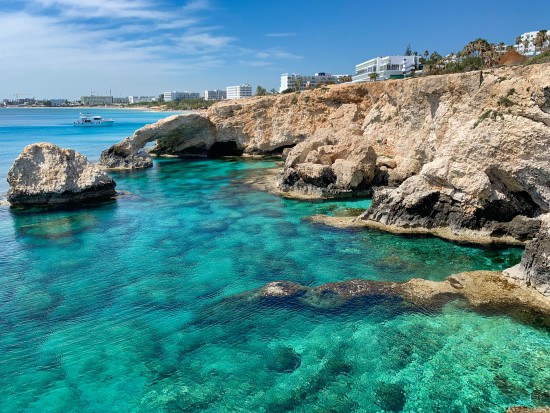
Cyprus is a member of the European Union, United Nations, and Commonwealth of Nations. Greek and Turkish are the official languages, while the euro is the nation’s currency. Cyprus has a population of around 1.2 million people.
Why visit Cyprus?
Cyprus is an excellent tourism destination for a number of reasons:
Gorgeous beaches: With over 650 kilometers of coastline, the island offers magnificent beaches with crystal-clear seas and a range of water sports activities.
History and culture: Cyprus has an amazing history and culture that goes back thousands of years, with many old archaeological sites, castles, and museums. The island’s culture is highly vibrant with its traditional music, dancing, and cuisine.
Climate: Cyprus has a Mediterranean climate, with long, hot summers and moderate winters, making it an ideal year-round getaway.
Outdoor activities: Outdoor activities on the island include hiking, cycling, and skiing in the Troodos Mountains.
Food and wine: Cyprus is well-known for its delectable food, which mixes Greek and Middle Eastern elements. The island’s wine sector is growing, with many vineyards giving tours and tastings.
Friendly locals: Cyprus’s people are noted for their hospitality and kindness, making tourists feel welcome and at home.
Overall, Cyprus has a unique combination of history, culture, beauty, and modern facilities, making it a popular tourist destination worldwide.
The 25 Best Things to Do in Cyprus
There are numerous attractions in this Mediterranean treasure, from sun-kissed beaches to breathtaking mountains and ancient ruins to vibrant cities. So pack your bags and prepare to explore the most incredible attractions Cyprus has to offer. Let’s look at the top 25 locations to visit in Cyprus!
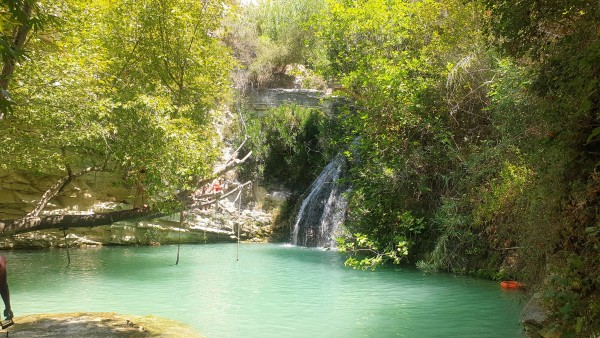
1. Adonis Baths
The Adonis Baths are a natural marvel in Cyprus’s Akamas area. It is claimed to be where Adonis, the Greek god of beauty and desire, bathed with his beloved, Aphrodite, the goddess of love and beauty. The Baths’ beauty is unrivaled, with its crystal-clear waters and surrounding lush greenery.
Visitors can swim in the refreshing waters of the natural pool, fed by a waterfall. Even throughout the warmer summer months, the water temperature stays cold, providing a nice break from the heat. The surrounding region is ideal for a relaxed picnic or a hike.
Adonis Baths are rich in mythology, tradition, and breathtaking view. According to mythology, Adonis was killed by a wild boar while hunting in the neighboring hills, and his blood dyed the river crimson. Visitors may view a tiny waterfall in the place where Adonis is claimed to have died.
Overall, the Adonis Baths is a must-see location in Cyprus, combining natural beauty with legendary heritage. The Adonis Baths is a great destination to visit whether you enjoy nature and history or simply want a relaxed day out.
2. Church of Saint Lazarus
The Church of Saint Lazarus, located in the center of Larnaca, Cyprus, is a remarkable specimen of Byzantine architecture. It is regarded as one of the most important religious monuments on the island, with a history dating back to the 9th century.
According to legends, the church is built where Saint Lazarus is buried. Saint Lazarus was a biblical character who was resurrected from the grave by Jesus Christ and eventually became Bishop of Cyprus. The church was built in his honor, and his bones are reportedly still there in a silver tomb.

The front of the church is covered with elaborate stone carvings, while the inside is embellished with stunning murals and images. The interior is highlighted by the spectacular Baroque pulpit, as well as the beautiful gold-plated iconostasis.
The Church of Saint Lazarus is a religious site besides being a work of beauty in architecture and art. Visitors can appreciate the grandeur of this ancient landmark when visiting Larnaca.

3. Stavrovouni Monastery
The Stavrovouni Monastery is a historical and spiritual monument on Stavrovouni Hill in Larnaca, Cyprus. The monastery was founded in the fourth century AD by Saint Helena, the mother of Emperor Constantine the Great, and is said to be the island’s oldest religious institution.
The monastery is 750 meters above sea level and offers breathtaking views of the surrounding area. Visitors must walk a rugged trail to reach the summit, but the effort is well worth it. Visitors may tour the monastery’s historic chapel, filled with exquisite murals and icons after they arrive. Visitors may also explore the ancient monastery’s ruins, including the well where Saint Helena is claimed to have discovered the actual cross.
Stavrovouni Monastery is a working monastery with a small community of monks. Visitors may also watch the monks’ everyday lives, which include a strict routine of meditation and contemplation.
4. Paphos Mosaics
The Paphos Mosaics are a spectacular collection of ancient Roman mosaics in Paphos, Cyprus. They are a UNESCO World Heritage site and are regarded as among the world’s best examples of mosaic art.
The mosaics were unearthed during excavations of ancient Paphos in the 1960s. These originate from the third and fourth century AD and show episodes from Greek mythology, such as the narrative of Dionysus and Ariadne, Hercules’ Labors, and the Judgment of Paris.

The mosaics are created by arranging tiny, bright stones in complicated patterns to create realistic sceneries. The intricacy and creativity are simply astounding, and visitors can spend hours admiring the mosaics’ beauty.
The Paphos Mosaics can be seen throughout the city, including the House of Dionysus, House of Theseus, and House of Aion. Guests are welcome to visit these historic homes and marvel at the mosaics in their natural settings.
The Paphos Mosaics are a tribute to the ancient Romans’ ability and craftsmanship, and they are a must-see location for anybody visiting Cyprus. Even if you are not a history fanatic, the Paphos Mosaics are definitely worth visiting.

5. Cape Greco
Cape Greco is a stunning and rocky headland on Cyprus’s southeastern coast, close to the major tourist attractions of Ayia Napa and Protaras. It is a natural reserve with breathtaking views of the Mediterranean Sea and hiking, swimming, and snorkeling options.
The rugged rocks, marine caves, and pure blue seas distinguish the headland. The environment is studded with indigenous flora and fauna, including the endangered Cyprus grass snake and Cyprus lizard.
Tourists may explore the Cape Greco National Park on foot, taking in the breathtaking cliff views or strolling along the lovely coastline walkways. The region has various beaches, notably Konnos Bay, a famous swimming and sunbathing destination. Scuba diving and snorkeling are top-rated sports in the area, thanks to the crystal-clear waters that provide good vision and the opportunity to see diverse marine species.
Cape Greco is home to historic sites, including the Ayioi Anargyroi Church and the Cyclops Cave, which is believed to have been the home of the mythological Cyclops.
Its natural beauty, outdoor activities, and old landmarks make it an ideal location for adventure and leisure.
6. Millomeris Waterfalls
The Millomeris Waterfalls are a hidden beauty in Cyprus’s Troodos Mountains. The waterfalls consist of cascading falls that drop into a pool below and are surrounded by lush foliage and magnificent rock formations.
The journey to the waterfalls is a moderate climb through deep forest and rocky terrain. The track is well-marked, with benches lining the track to rest and admire the landscape. The peaceful sound of flowing water and the cool mist in the air welcome guests as they approach the waterfalls.
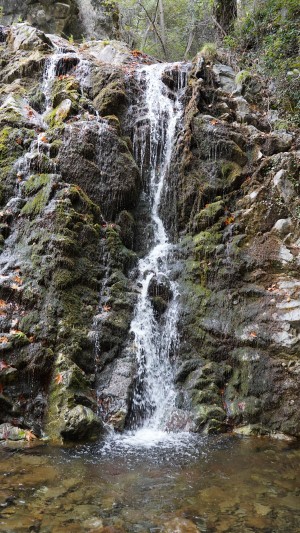
The Millomeris Waterfalls is a favorite swimming destination since the water below the falls is deep enough for a cool dip. Tourists may also explore the surrounding region, which contains a number of lesser waterfalls and natural ponds.
The region surrounding the Millomeris Waterfalls is rich in history, culture, and natural beauty. Tourists visit surrounding historic villages like Platres and Prodromos to observe traditional Cyprus architecture and eat local food.
The Millomeris Waterfalls are for everyone visiting Cyprus who enjoys nature, trekking, and outdoor activity. The waterfalls offer a calm respite from Cyprus’s bustling towns and beaches and a look into the island’s breathtaking natural splendor.
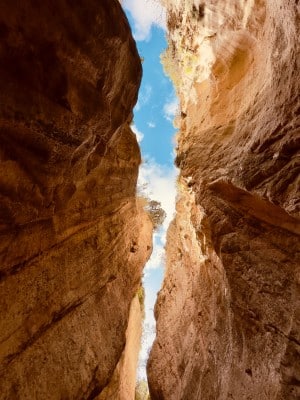
7. Avakas Gorge
Avakas Gorge is a natural marvel near Peyia on Cyprus’s west coast. It is a deep, narrow canyon created by water movement and erosion over millions of years.
The gorge is distinguished by its towering rock formations that reach up to 30 meters in height and its crystal-clear rivers that run through it. The gorge hiking path is around 3 kilometers long and leads hikers through various environments, from lush woodland to rocky terrain.
Visitors will experience a variety of flora and animals as they journey down the canyon, including endemic species unique to Cyprus. The Cyprus oak tree, the Cyprus cyclamen flower, and the Cyprus viper, one of the island’s most dangerous snakes, are among the most prominent species.
One of the most stunning aspects of Avakas Gorge is its magnificent rock formations, which natural forces over millions of years have formed. The canyon walls have a range of shapes and textures, ranging from smooth and rounded to abrupt and jagged.
Avakas Gorge is a must-see for everyone visiting Cyprus who enjoys nature and trekking. In addition to providing a unique and fantastic experience, the canyon offers a stunning view of the island’s natural beauty.
8. Hala Sultan Tekke
Hala Sultan Tekke is a medieval Cyprus mosque built on the Larnaca Salt Lake shores. It is regarded as one of the most important Muslim shrines in the world, and tourists travel from all over the world to pay their respects and learn about the mosque’s affluent history.

The mosque is named after Umm Haram, a Prophet Muhammad relative who died on a journey to Cyprus. According to mythology, a shepherd who noticed a light gleaming in the distance discovered her grave. He followed the light and discovered the tomb, which was later transformed into a mosque.
Hala Sultan Tekke is now a major attraction for both residents and tourists. The mosque has a lovely white dome and tower and is surrounded by a verdant garden with various flora and trees.
Visitors may visit the mosque and its surroundings, admiring its stunning architecture and learning about its history. Visitors can also go to Umm Haram’s grave, which is located within the mosque and is a religious location.
Hala Sultan Tekke symbolizes interfaith harmony, tolerance, and religious importance. The mosque is open to people of all religions and represents the island’s rich cultural history.
Hala Sultan Tekke is for anybody interested in history, culture, or religion visiting Cyprus. It provides a tranquil and reflective setting ideal for reflection and meditation, and a unique and intriguing peek into the island’s rich cultural legacy.
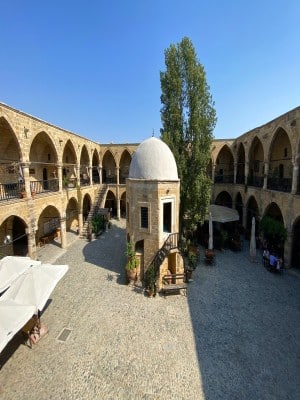
9. Kykkos Monastery
Kykkos Monastery is a historical and religious monument in Cyprus’s Troodos Mountains. It was founded in the 11th century and is one of the island’s most critical and prominent religious structures, with a rich collection of Byzantine art and antiques.
The monastery is named after the icon of the Virgin Mary that is kept inside, which is believed to have miraculous powers. The Orthodox Church considers the icon, which is supposed to have been painted by Saint Luke the Evangelist, a hallowed relic.
The monastery is a beautiful tower with exquisite artwork and stunning architecture. The monastery’s interior features many chapels, a museum, and a library containing a collection of rare manuscripts and books.
One of Kykkos Monastery’s most striking characteristics is its collection of Byzantine art, which includes mosaics, frescoes, and icons. These art pieces originate from the 11th century and are regarded as some of the world’s best examples of Byzantine art.
Kykkos Monastery, in addition to its theological and cultural value, is surrounded by spectacular natural surroundings, making it a favorite destination for hikers and nature enthusiasts. The nearby region has several hiking paths and breathtaking views of the Troodos Mountains.
10. Amathus
Amathus is an ancient city on Cyprus’s southern coast, near the modern city of Limassol. In antiquity, it was one of the most prominent city-kingdoms on the island, and it is today a major archaeological spot and tourist attraction.

Amathus was founded in the 11th century BC and has played a vital part in the island’s history for millennia. It was noted for its rich culture and great civilization and a prominent focus of adoration for the goddess Aphrodite.
Visitors to Amathus can now tour the historic city’s remains, which feature a variety of spectacular architecture and monuments. The ruins of the city’s acropolis, which initially housed a massive palace and a number of temples, as well as the remnants of the agora, or marketplace, are among them.
Amathus’ historic theatre, which is still in astonishingly good shape, is one of its most outstanding characteristics. The theatre, established in the third century, could seat up to 2,000 people, making it one of the largest in ancient Cyprus.
Amathus is noted for its gorgeous beaches, stunning coastline landscape, and historical and archaeological value. Tourists may swim and sunbathe at one of the area’s many beaches or take a boat excursion to see the neighboring sea caves and rock formations.
11. The Archaeological Museum in Limassol
The Limassol Archaeological Museum is one of the island’s most prominent museums and a must-see for anybody interested in the island’s great history and culture. The museum, located in the center of Limassol, houses a remarkable collection of ancient relics and exhibits.
The museum’s collection comprises artifacts from many periods of Cyprus’ history, including ceramics, sculptures, coins, jewelry, and weaponry. The displays span various themes, including the island’s ancient civilizations, early Christian period, and current history.
The collection of antique pottery dates back to the Neolithic period and is one of the museum’s most outstanding exhibitions. Various remarkable sculptures and figures, including Hellenistic and Romanian specimens, are also displayed.
The museum’s ancient coinage collection, including Archaic, Classical, Hellenistic, and Roman period specimens, is another attraction. These coins offer an intriguing view into the island’s economic history and the many cultures inhabited by Cyprus.
The Limassol Archaeological Museum, in addition to its permanent collection, organizes a number of temporary exhibits throughout the year, covering a variety of subjects relating to Cyprus’ history and culture.
Overall, the Limassol Archaeological Museum is a fantastic collection of artifacts and exhibitions that offers a view of the island’s past while assisting visitors in better understanding its present.
12. Limassol Castle
Limassol Castle is a historic fortress in the center of Limassol, Cyprus. It is a major tourist destination and one of the most significant historical landmarks on the island.
The Byzantines erected the fortress in the 13th century, while the Lusignans renovated and extended it in the 14th century. The castle was utilized as a jail and a salt storage facility throughout the Ottoman Empire.
The Limassol Castle Museum, which highlights the history of the castle and the city of Limassol, is now housed in the fully rebuilt castle. The museum has a variety of exhibits spanning many periods of Cyprus’ history, from the ancient through the medieval and Ottoman periods.
One of Limassol Castle’s most outstanding characteristics is its well-preserved walls and battlements, which provide beautiful views of the surrounding countryside. Guests may also visit the castle’s interior, which features a chapel, a kitchen, and a jail cell, among other features.
Limassol Castle, in addition to its historical and architectural value, is a major cultural center, holding a range of events throughout the year, including concerts, theatrical performances, and art exhibitions.

13. Kolossi Castle
Kolossi Castle is a medieval castle located just outside of Limassol, Cyprus, near the village of Kolossi. It is one of the island’s best-preserved castles and a popular tourist destination.
The Knights Hospitaller, a Catholic military order that ruled the island then, erected the fortress in the 13th century. It was utilized as a sugar cane processing plant throughout medieval times, and during the Ottoman period, it was employed as a command headquarters.
The castle has been rebuilt and is now available to the public. The castle’s interiors feature several beautiful rooms and chambers, including a chapel, a large hall, and a kitchen. Tourists may even climb the walls of the castle to enjoy breathtaking views.
The history of Kolossi Castle as a sugar cane processing plant is one of its most intriguing aspects. The bottom floor of the castle contains a series of displays that depict the process of sugar manufacturing, from cane harvesting to sugar refining.
Besides its historical significance, Kolossi Castle is an important cultural center, holding various events throughout the year, including concerts, theatrical performances, and art exhibitions.
14. Limassol Zoo
Limassol Zoo is a prominent tourist destination in Limassol, Cyprus. It is home to a diverse range of animals worldwide, making it an excellent destination for families and animal enthusiasts.

The zoo began as a small collection of animals in 1980 and has since evolved to become one of Cyprus’s largest and most well-known zoos. Almost 300 animals live there now, including lions, tigers, monkeys, reptiles, and birds.
Several attractions and activities for visitors of all ages are available at Limassol Zoo. The attractions include a petting zoo where visitors may engage with friendly animals, a playground for youngsters, and a variety of picnic sites where tourists can enjoy a meal.
During the year, the zoo also provides a variety of educational activities and events, such as guided tours, seminars, and special exhibitions. These activities are intended to educate visitors about the zoo’s animals and the importance of conservation.
Overall, Limassol Zoo is an entertaining and educational trip for the whole family. A visit to Limassol Zoo is well worth your time, whether you are interested in animals, education, or simply having fun with family and friends.
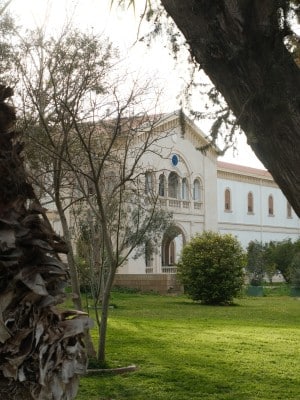
15. Cyprus Museum
The Cyprus Museum is the island’s largest and oldest archaeological museum. It is located in Nicosia’s capital city and has an extensive collection of artifacts and exhibitions highlighting the island’s rich history and cultural heritage.
From its inception in 1882, the museum has been enlarged and restored to house over 14,000 exhibits spanning over 9,000 years of Cyprus’ history. Displays range from ancient ceramics and sculptures to jewelry, coins, and weaponry.
The collection of antiquities from the ancient city of Salamis, one of the most significant cities on the island during the Roman period, is one of the most impressive displays at the Cyprus Museum. These relics include mosaics, sculptures, and other things that provide insight into the ancient Cypriots’ daily lives and traditions.
The Cyprus Museum, in addition to its permanent displays, organizes a variety of temporary exhibits and educational events throughout the year. These programs include seminars, lectures, and guided tours to assist visitors in learning more about Cyprus’s history and culture.
16. Choirokoitia
Choirokoitia is a historic hamlet on Cyprus’s southern coast, around 30 kilometers southeast of Larnaca. It is a UNESCO World Heritage Site and one of the most important historical sites on the island.

The village is thought to have been one of the first permanent human communities on the island during the Neolithic period, circa 7000-4000 BC. The site is made up of a number of round and rectangular stone structures, many of which are still standing today.
Choirokoitia’s defensive walls, constructed around the village to defend it from attackers, are one of its most fascinating characteristics. The walls are constructed of huge stones and may be up to three meters thick in certain areas.
Excavations in Choirokoitia have yielded many artifacts, including pottery, stone tools, and human bones. These artifacts offer vital insights into the ancient Cypriots’ everyday lives, habits, and beliefs.
Visitors to Choirokoitia may now explore the site and learn about its rich history through guided tours and exhibitions. The location also has a visitor center, gift store, and picnic spots, making it a popular tourist and local destination.

17. Pafos Zoo
Pafos Zoo is a renowned tourist attraction in the village of Peyia, near Pafos on Cyprus’s southwestern coast. The zoo has creatures worldwide, including birds, mammals, reptiles, and amphibians.
The big cat display, which includes lions, tigers, leopards, and jaguars, is one of the attractions of Pafos Zoo. The zoo also houses many bird species, including parrots, eagles, owls, and primates such as chimps, gibbons, and lemurs.
Pafos Zoo, in addition to the animal displays, has a variety of other attractions and activities for tourists. A petting zoo, a playground, a reptile house, and a bird park are among the attractions, as are a café and a gift store.
The zoo is dedicated to animal welfare and conservation and participates in several breeding initiatives to help save endangered species. Visitors may learn about these projects and the zoo’s efforts to encourage sustainable tourism through educational exhibits and activities.
18. Pierides Museum
The Pierides Museum is modest but intriguing in the heart of Larnaca’s old town on Cyprus’s southeastern coast. The museum is set in an opulent 18th century home elegantly restored and remodeled to exhibit the Pierides family’s collection.

The collection includes antiquities from the Neolithic period through the Roman era, such as pottery, coins, jewelry, and other objects. One of the museum’s attractions is its collection of ancient Cyprus pottery, regarded as one of the best in the world.
Apart from historical relics, the museum has a collection of 19th-century European paintings, furniture, and ethnographic objects such as traditional Cyprus costumes and textiles.
Via guided tours and interactive displays, visitors to the Pierides Museum may explore the numerous exhibits and learn about Cyprus’s rich cultural heritage. During the year, the museum also conducts various cultural events and educational activities, such as seminars, talks, and special exhibitions.
Overall, the Pierides Museum is a must-see for everyone interested in Cyprus’s art, history, and culture. It is guaranteed to be a highlight of any vacation to Larnaca, with its gorgeous setting, a vast collection of antiquities, and entertaining exhibitions and activities.
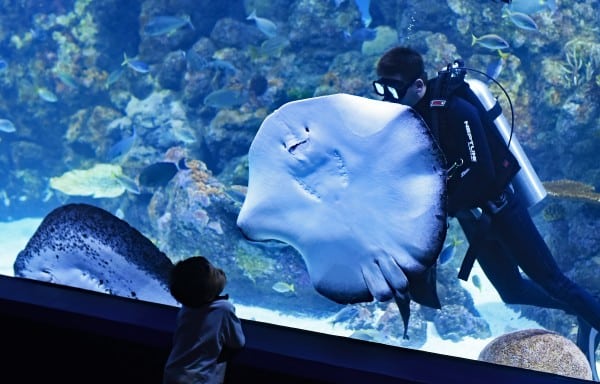
19. Protaras Ocean Aquarium
The Protaras Ocean Aquarium is a notable attraction in the beach resort town of Protaras on Cyprus’s eastern coast. The aquarium provides visitors with a one-of-a-kind opportunity to learn about the aquatic life of the Mediterranean Sea and beyond.
The aquarium has about 400 different types of marine life, including colorful fish, sharks, turtles, and rays, in displays and tanks. Several of the animals on the show can be approached up and personal so that visitors can learn about their behaviors, habitats, and ecological relevance.
The aquarium’s big shark tank, which contains a variety of species such as blacktip and whitetip reef sharks, nurse sharks, and sand tiger sharks, is one of its attractions. A uniquely created viewing tunnel allows visitors to observe the sharks swimming overhead.
Apart from the marine life exhibits, the aquarium features a number of interactive displays and educational activities, such as a touch tank where visitors may hold starfish and sea urchins and a 5D cinema that shows environmental documentaries and instructional films.
The Protaras Ocean Aquarium is a pleasant and instructive excursion for families and marine life aficionados. It is a must-see attraction for anybody visiting the Protaras area of Cyprus, with its unique collection of sea animals, interactive displays, and educational activities.
20. Thalassa
Thalassa is a one-of-a-kind museum in the beach town of Agia Napa on Cyprus’s southeastern coast. The museum is devoted to the sea and its role in forming Cyprus’s cultural and natural heritage.
The museum’s exhibits and displays, which include artifacts, pictures, and interactive exhibits, highlight the cultural and ecological value of the sea. Visitors may learn about the history of sailing in Cyprus, the significance of fishing in the local economy, and the Mediterranean’s abundant marine life.
Outdoor exhibits and displays at the museum include a recreation of a traditional fishing boat and a reconstructed salt flat where visitors may learn about the salt harvesting process.
Ultimately, Thalassa is an enthralling and informative trip for anybody fascinated by the water and its role in molding Cyprus’s culture and ecosystem. It is a must-see attraction for anybody visiting the Agia Napa area of Cyprus, with its intriguing exhibitions, interactive displays, and comprehensive collection of marine life.
21. Petra tou Romiou
Petra tou Romiou, commonly known as Aphrodite’s Rock, is a famous tourist site on Cyprus’s southwestern coast, near Paphos. According to folklore, the goddess Aphrodite was created from sea foam in this magnificent granite formation.
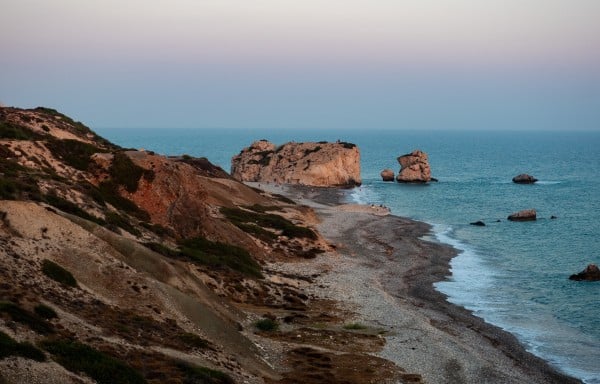
With crystal-clear blue seas and rugged cliffs, the region surrounding Petra tou Romiou is attractive and charming. Tourists may swim in the water or walk along the beach, famous for its spectacular sunsets.
Petra tou Romiou has a rich cultural and historical legacy and mythical importance. Visitors may tour the neighboring ruins of the ancient Kourion, which date back to the 8th BC and learn about its history.
Petra tou Romiou is a breathtakingly beautiful and culturally significant attraction that no one visiting Cyprus should miss. Whether you are interested in mythology, history, or a gorgeous natural landscape, this legendary site will likely impact you. So, do not miss to visit the Aphrodite’s rock on your next visit to Cyprus!

22. Kato Paphos Archaeological Park
Kato Paphos Archaeological Site is an open-air museum near the seaside city of Paphos on Cyprus’s southwestern coast. The park has many ancient ruins and monuments that provide insight into the island’s rich cultural and historical legacy.
The House of Dionysos, a magnificently preserved villa from the 2nd century AD, is one of the park’s attractions. The villa houses an exquisite collection of detailed mosaics depicting events from Greek mythology, notably the well-known story of the deity Dionysos and the wine god Silenus.
The Odeon, a historic amphitheater built in the second century BC, is another must-see sight in the park. The Odeon still hosts concerts and events, and the acoustics are highly reputed.
The Tombs of Kings, a collection of underground tombs dating back to the Hellenistic period, and the Agora, a historic marketplace once the city’s hub of business and trade, are two other prominent sites in the park.
Overall, Kato Paphos Archaeological Site is an intriguing place that will pique the curiosity of anybody interested in ancient history and archaeology. You should explore this location when visiting the Paphos area of Cyprus for its gorgeous ruins, beautiful mosaics, and enormous amphitheater.
23. Medieval Castle of Paphos
The Paphos Medieval Castle, often known as the Paphos Castle, is a spectacular historical monument on the shore of Cyprus’s southwestern coast. The Lusignans, a French family who dominated Cyprus throughout the medieval period, erected the fortress in the 13th century.

Over history, the castle has served as a fortification, a jail, and a salt storehouse, among other things. It is now a major tourist destination and a symbol of Cyprus’s rich cultural and historical legacy.
Visitors may tour its formidable walls and towers, which provide breathtaking views of the sea and surrounding scenery. The castle also has a small museum with relics and exhibits linked to the castle’s history and the island of Cyprus.
One of its distinguishing features is the castle’s position on a small peninsula protruding into the sea. Guests can wander around the castle walls, picnic on the grassy meadows, or simply gaze out over the Mediterranean Sea.
The Paphos Medieval Castle is for anybody interested in history, architecture, or breathtaking sea views. It is one of the most famous monuments in the Paphos region of Cyprus, with its massive defenses, intriguing history, and stunning beachfront position.
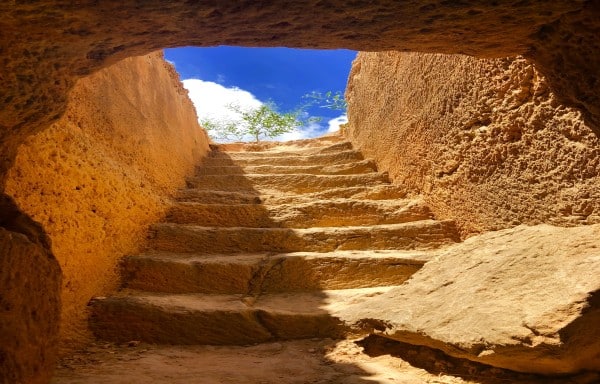
24. Tombs of the Kings
The Tombs of the Kings is a massive ancient necropolis on the outskirts of Paphos on Cyprus’s southern shore. It is one of the island’s most important archaeological sites and a must-see for anybody interested in ancient history and culture.
The tombs were burial locations for affluent and influential citizens during the Hellenistic and Roman periods. The term relates to the splendor and grandeur of the tombs, which have been compared to royal burial grounds despite never being used to bury kings.
Visitors may tour the various underground tombs and observe the beautiful carvings and decorations that cover the walls and ceilings of the Tombs of the Kings. The graves are organized into groups with unique designs and features.
The site also has a museum with relics and displays of the history and culture of the tombs and the individuals who were buried there.
The site of the Tombs of the Kings is one of its most outstanding aspects; they are placed in a beautiful natural terrain, surrounded by rich greenery and breathtaking sea vistas. Visitors may wander about the site, picnic in a neighboring park, or simply admire the old graves and the history they symbolize.
25. Leventis Gallery
The Leventis Gallery is a modern art gallery in Nicosia, Cyprus’s capital. The museum has a large Cyprus art and culture collection, emphasizing the nineteenth and twentieth centuries.

The Leventis Gallery is set in a stunningly renovated historic structure from the 18th century. With its magnificent architecture and superb interior design, the building is a piece of art. The museum’s galleries are divided into various floors, each focusing on a particular Cyprus art and culture area.
The museum’s collection contains works by notable Cypriot painters and foreign artists who Cyprus influenced. The displays trace the growth of Cyprus art throughout the ages, from traditional folk art to modern and contemporary pieces.
Visitors to the Leventis Gallery may experience a variety of exhibitions and activities, such as talks, seminars, and cultural programs. The museum also features a beautiful cafe and gift store where visitors can rest and buy souvenirs.
How to visit Cyprus?
There are various ways to reach Cyprus:
Via air: Flying to Cyprus is the most convenient option. Larnaca International Airport and Paphos International Airport serve the country’s two international airports, which receive flights from all over the world.
By sea: Cyprus has various ports where ferry services from Greece and other Mediterranean nations arrive.
Via land: If you are traveling from the north, you can pass the border between the Turkish Republic of Northern Cyprus and the Republic of Cyprus.
Visa requirements: Several countries allow visitors to enter Cyprus for up to 90 days without a visa. Therefore, before arranging your trip, verify the individual visa requirements based on your nationality.
Transportation: When you arrive in Cyprus, you may use public transit, rental automobiles, or taxis to travel the island. Buses are a popular means of transportation, and intercity buses connect the island’s major cities. Taxis are commonly accessible, and those who desire more freedom can hire a vehicle.
Cyprus is a simple country to visit, with convenient transportation and simple visa procedures for many nations.
Conclusion
Cyprus is a lovely and intriguing nation with lots to offer all types of tourists, no matter their age or interests. This small but intriguing nation has numerous locations to visit and discover, from breathtaking beaches and ancient ruins to modern art museums and natural marvels.
If you’re going to Cyprus, visit some of the 25 finest spots featured in this article. You will not be let down!
So, what are you holding out for? Don’t pass up the chance to enjoy the beauty and magic of Cyprus. Make memories that will last a lifetime by booking your vacation now!
Frequently Asked Questions about Things to Do in Cyprus
What should I not miss in Cyprus?
Cyprus’s three must-see attractions are the Paphos Mosaics, the Kykkos Monastery, Aphrodite’s rock, and the Tombs of the Kings.
How can I have fun in Cyprus?
In Cyprus, you may have fun by visiting its beaches, experiencing its historical monuments, sampling its unique food, and enjoying its nightlife.
How many days do you need in Cyprus?
Your schedule and interests determine the number of days required in Cyprus. Yet, a week is generally sufficient to visit all the key sights.
What is Cyprus best known for?
Cyprus is well recognized for its stunning beaches, historic ruins, delectable cuisine, and welcoming people.


